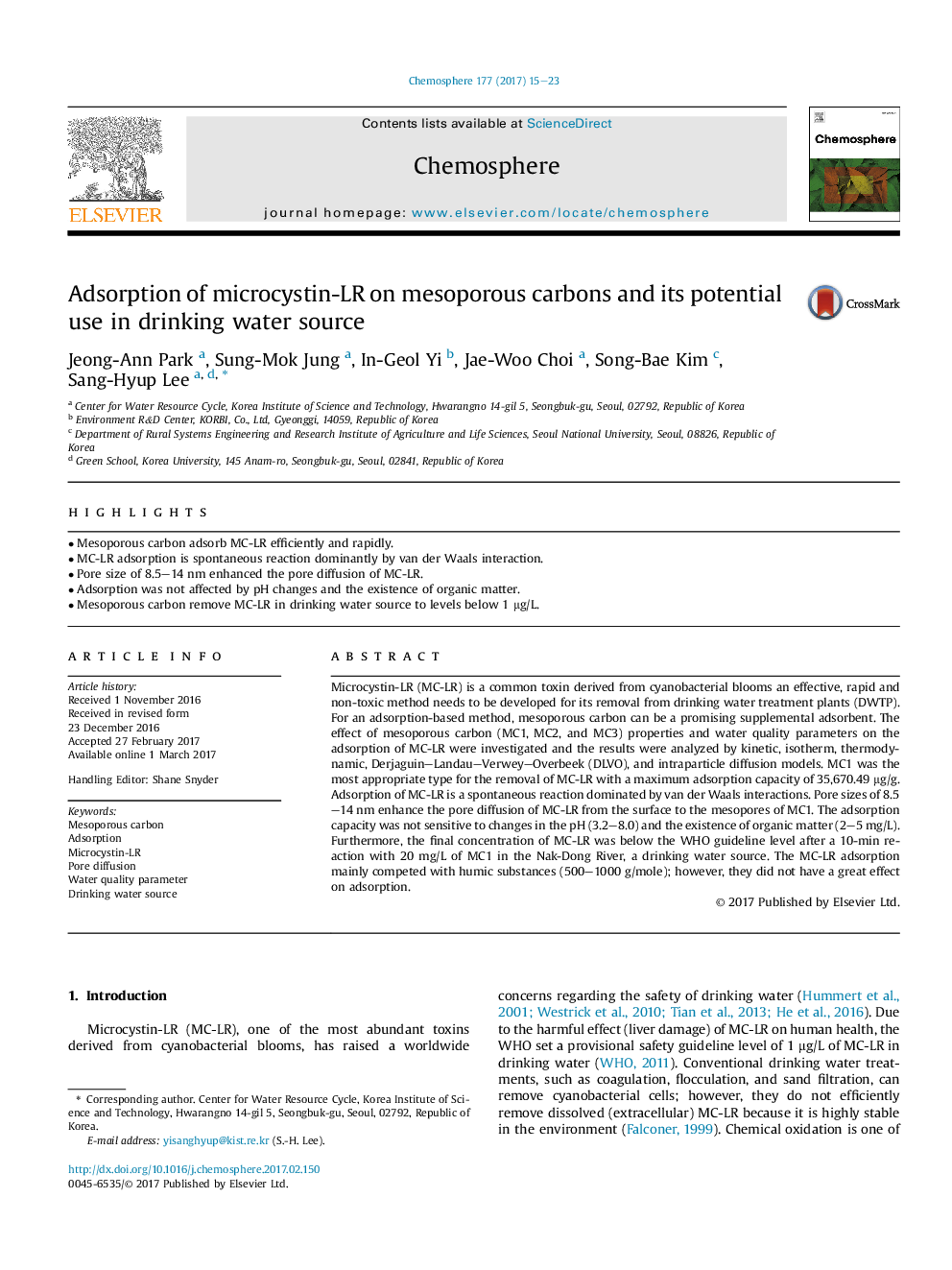| کد مقاله | کد نشریه | سال انتشار | مقاله انگلیسی | نسخه تمام متن |
|---|---|---|---|---|
| 5746308 | 1618794 | 2017 | 9 صفحه PDF | دانلود رایگان |

- Mesoporous carbon adsorb MC-LR efficiently and rapidly.
- MC-LR adsorption is spontaneous reaction dominantly by van der Waals interaction.
- Pore size of 8.5-14Â nm enhanced the pore diffusion of MC-LR.
- Adsorption was not affected by pH changes and the existence of organic matter.
- Mesoporous carbon remove MC-LR in drinking water source to levels below 1 μg/L.
Microcystin-LR (MC-LR) is a common toxin derived from cyanobacterial blooms an effective, rapid and non-toxic method needs to be developed for its removal from drinking water treatment plants (DWTP). For an adsorption-based method, mesoporous carbon can be a promising supplemental adsorbent. The effect of mesoporous carbon (MC1, MC2, and MC3) properties and water quality parameters on the adsorption of MC-LR were investigated and the results were analyzed by kinetic, isotherm, thermodynamic, Derjaguin-Landau-Verwey-Overbeek (DLVO), and intraparticle diffusion models. MC1 was the most appropriate type for the removal of MC-LR with a maximum adsorption capacity of 35,670.49 μg/g. Adsorption of MC-LR is a spontaneous reaction dominated by van der Waals interactions. Pore sizes of 8.5-14 nm enhance the pore diffusion of MC-LR from the surface to the mesopores of MC1. The adsorption capacity was not sensitive to changes in the pH (3.2-8.0) and the existence of organic matter (2-5 mg/L). Furthermore, the final concentration of MC-LR was below the WHO guideline level after a 10-min reaction with 20 mg/L of MC1 in the Nak-Dong River, a drinking water source. The MC-LR adsorption mainly competed with humic substances (500-1000 g/mole); however, they did not have a great effect on adsorption.
Journal: Chemosphere - Volume 177, June 2017, Pages 15-23